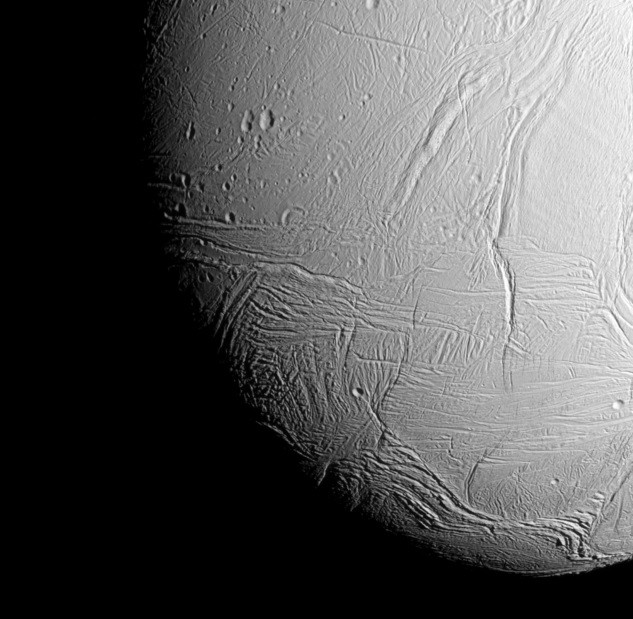NASA just revealed stunning, new images of Saturn's moon, Enceladus, during an October 28 flyby where the probe spiralled down to just 30 miles from the surface of the geyser filled moon.
In this latest mission, the probe dived into a plume that is located in the southern polar region of Enceladus where NASA scientists believe that this can hold clues or evidence about an ocean deep underneath the moon's icy crust.
NASA scientists are speculating about the existence of this global ocean on Saturn's moon since geothermal activity from its geysers can suggest strong evidence of this ocean, that can also lead to telltale signs of micro organisms.
According to Cassini project scientist Linda Spilker, these recent stunning images are now providing a quick glimpse of Enceladus up close with unprecedented views of the moon, during this ultra close flyby where the next exciting new is yet to come. To date, Cassini is still transmitting crucial data from Enceladus to mission ground control on Earth.
During this mission, Cassini is also measuring levels of molecular hydrogen from the plumes on the moon as this is considered to be the lightest kind of molecule ever found in the universe, consisting of two hydrogen atoms.
Molecular hydrogen levels in this plumes can help scientists determine the amount of hydrothermal activity on Enceladus and provide any data about the moon's potential to sustian life.
Scientists have always been highly interested in Enceladus as erupting icy fountains of geysers have been continuously detected on the moon for almost 10 years now. They also believe that these geyser regions can potentially become an ideal spot for a future human colony.
By the end of this year, Cassini is scheduled to make its final flyby of Enceladus where it will approach the moon at an altitude of 3,106 miles where the last mission is set to measure the amount of heat originating from the moon's interior.



























